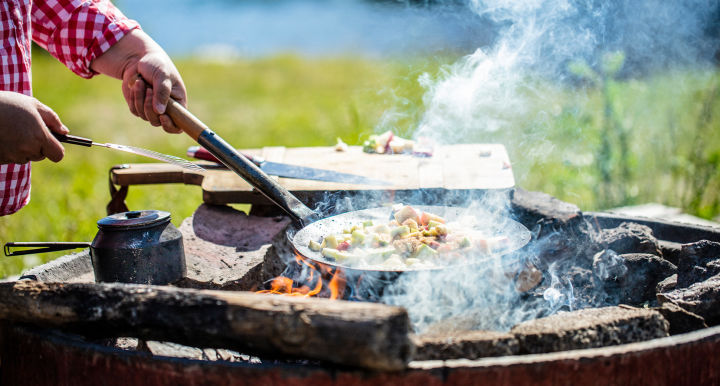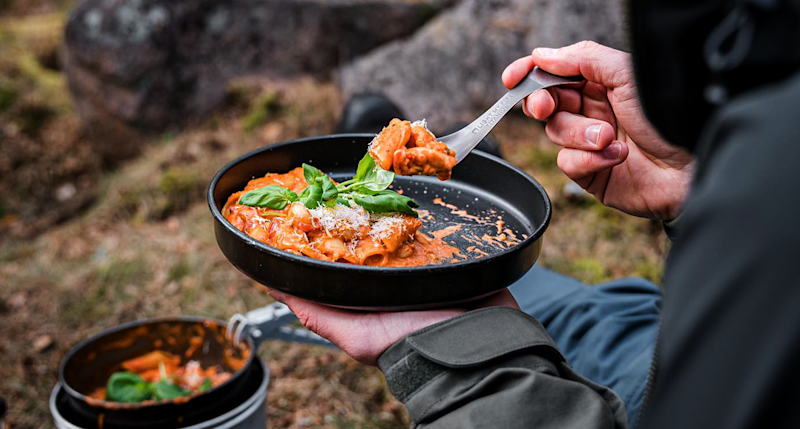
Outdoor cooking
The freedom to cook anywhere is wonderful – from snowy mountain tops, to a lake in summer, a stove in a winter tent to the flames of a fire. But how do you cook something outside?
There are many ways to cook your favorite meal when you're out on an adventure with many different outdoor kitchens and fuels. In this guide, we summarize some advice for outdoor cooking and describe different outdoor kitchens as well as their pros and cons.
Things to consider when cooking outdoors
- It's easier to start with simpler recipes, prepare as much as possible at home and read the recipes carefully
- Gas, spirit and multi-fuel stoves are easy to bring on longer hikes
- Camping stoves are easy to use because they resemble your stove at home
- Cooking over an open fire gives the food a nice aroma from the smoke
- It's important to remember garbage bags, matches, water, and – above all – to have fun!
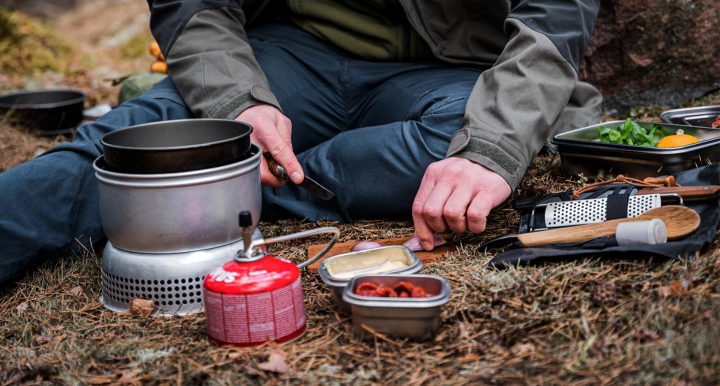
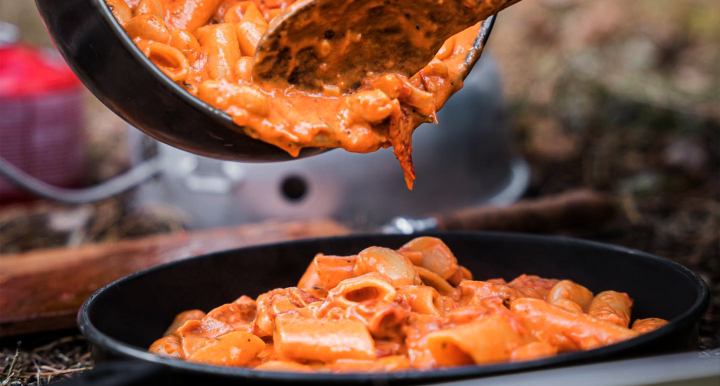
What do you need to cook outdoors?
Cooking outside can feel difficult when you are used to the comfort of your kitchen at home, with all the ingredients, spices and utensils close at hand. Out in nature, on the other hand, it's important to bring everything the recipe requires. Here are some tips to keep in mind when cooking outside.
Start small
Remembering 10 different spice jars, 5 ingredients and all the utensils required – not least to prepare the food but also to eat it – can easily result in a heavy bag. A good start is to first try cooking simpler recipes outside, such as freeze-dried meals. Then you get the chance to get to know your outdoor kitchen and try eating out. Maybe you realize that paper is essential to bring, or some extra water. Staying close to home is also smart at first, then you can always run home if you realize you forgot something!
Prepare at home
When you have to prepare dishes with more ingredients and utensils, it is smart to prepare as much as you can at home. Maybe you come to a place where there is no flat surface to put the cutting board on, then it is not as fun to chop vegetables anymore. Take ready-cut ingredients and spice mixes in lunch boxes with you to make it easier for you when you are out in nature. Perhaps you can also use the included lunch boxes as bowls to eat from when the food is ready - then you don't have to bring bowls or plates with you! Reading the recipe carefully, preparing a lot at home, and making a packing list are all good things to do before cooking out.
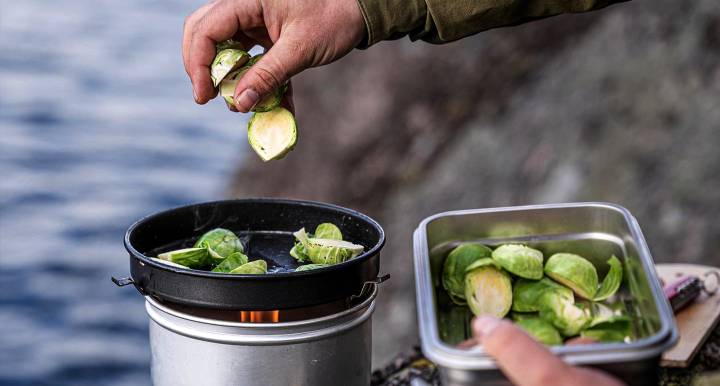
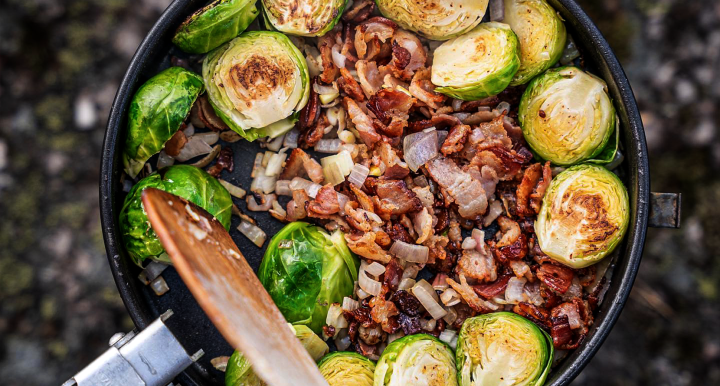
Different outdoor stoves
How do you cook on a spirit burner? And what is the difference between a spirit burner and a gas burner? Those are two questions that you may have as an amateur outdoor cook. In the following paragraphs, we clarify what is meant by different outdoor stoves and culminate in a comparison between their pros and cons.
Gas burner
We start with our most tried and tested kitchen – the gas burner. A top or side-mounted burner that often doesn't take up much space in your packing and has a very efficient combustion – when the temperature doesn't go too far below zero. If it is cold outside, you may need special gas for winter use. Here you often get two pots and a frying pan in a compact package, perfect if you want to cook recepies with several components.
We like gas burners precisely because they are so easy to bring and in many cases you can fit both your gas tube and burner in the pan itself, how convenient! When you are hiking and need to consider weight and pack size, this type of kitchen shines. Especially when you prepare freeze-dried dishes, or other meals that do not weigh much and only need the addition of water. In just a few minutes the water boils and you can add it to your dish.
Spirit burner
Many people associate spirit cooking with their childhood, when you went out into the woods with your grandfather or went on a mountain hike with your family and cooked in a Trangia kitchen. Even today, this is a well-used fuel method by outdoor enthusiasts. The advantage that we experience with the spirit stove is that the flame is much kinder to fry on. Alcohol is also cheaper than gas and the burner is cheaper than a gas burner. The empty packaging is sorted into normal waste and is available for purchase at every second gas station. Spirit stoves also burn at lower temperatures – we're talking several degrees below zero here. As with gas cookers, several cookware is often included in a spirit burner.
The disadvantage of a spirit kitchen is that it feels more fiddly – you have to fill it up often and it can get a bit messy when you're in the middle of cooking. In addition, you need to wait for the burner to cool down if you have alcohol left in the burner when you have finished cooking. As the flames are kinder than those of a gas cooker, this means that it also takes longer to heat up the contents of the pan.
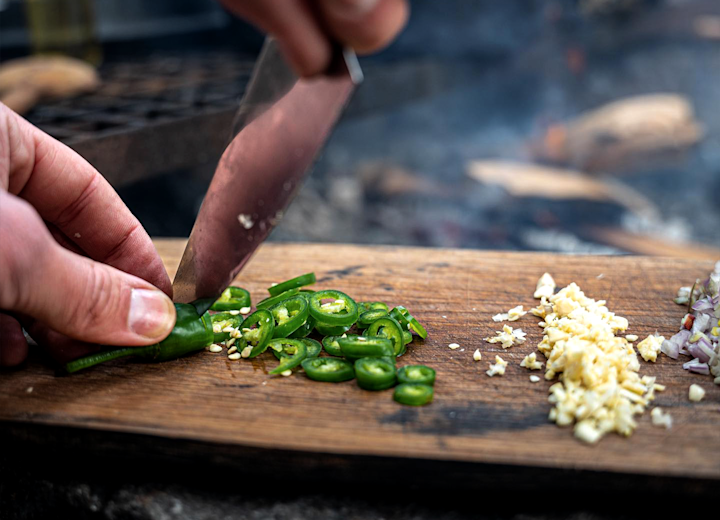
Multifuel stove
Perhaps more of a specialist kitchen than the others, multifuel stoves are also called expedition stoves. It's not the easiest to use but is incredibly reliable around the world, perfect when you are exploring the world's great outdoors. Just as the name suggests, this kitchen can be used with all possible types of fuel – everything from pure petrol to diesel, jet fuel to kerosene, even gas with an adapter. When you're travelling, it can be difficult to find a gas container that fits your gas stove – with a multi-fuel stove, you're on the safe side. They are also manufactured to be able to prepare food more easily in the field and do not have as many fragile parts as other outdoor stoves.
Camping stoves
Camping stoves are larger gas kitchens with two (or more) burners, alternatively a larger wood-burning stove. We like to use these stoves when we have a base camp for a few days ahead, are out on a road trip or simply don't have to walk that far. The advantage of camping camping stoves is that it is a bit more like the kitchen at home – you have a larger surface to cook on and it feels easier to cook a whole meal for your family or group of friends. Here, however, the disadvantage is that it is large and that several gas tubes are often required for the various burners, alternatively fire wood or coal for the wood-burning camping stoves.
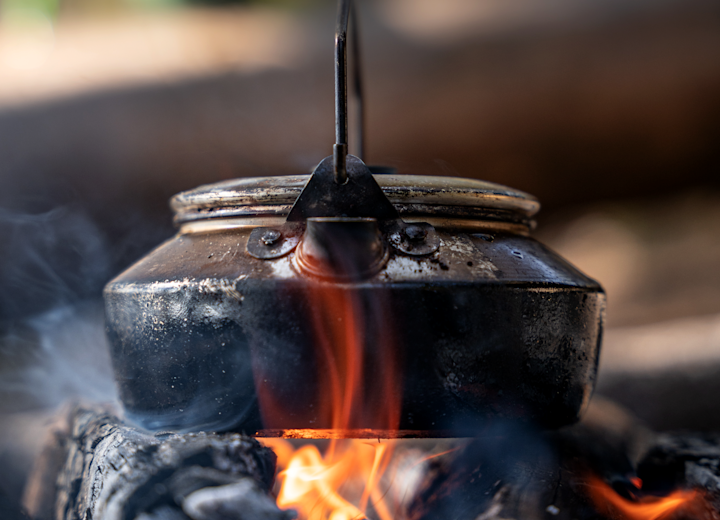
Open fire
Although this may not be a stove or a burner, we still want to mention the fire. This is probably our absolute favorite way to cook outdoors. From the first spark from the fire steel or match, to a hot meal. Here it is best to use frying pans, pots and sandwich irons made of cast iron. Cast iron distributes the heat well and withstands the fire's variation in heat very well. We think that everything tastes better cooked over a fire and it probably has to do with the smoky taste and the whole ritual around cooking over an open fire.
The disadvantage is of course that cast iron in particular weighs a lot and is not something you want to walk far with. You also need to have access to firewood or sticks, which can be difficult up in the mountains or in a nature reserve. If you are going to make a fire in nature, it is important to make sure that it is permitted, and that you extinguish the fire properly when you are finished.
Comparison
| Pros | Cons | |
|---|---|---|
| Gas burner |
|
|
| Spirit burner |
|
|
| Multifuel stove |
|
|
| Camping stove |
|
|
| Open fire |
|
|
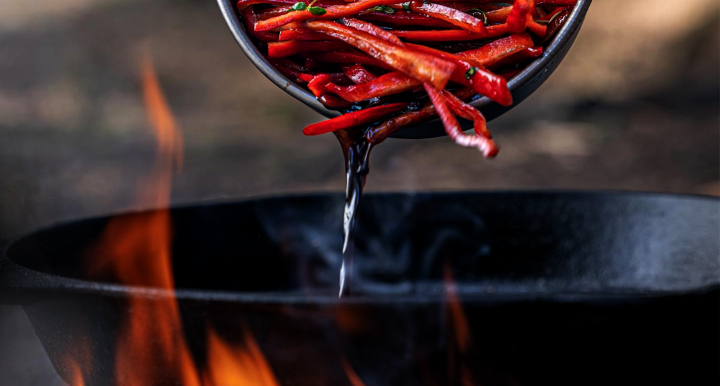
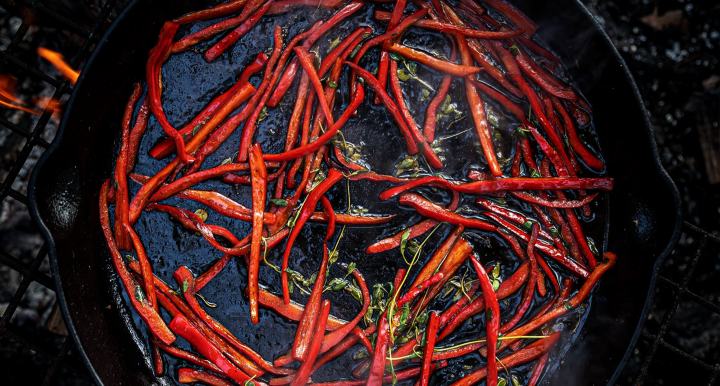
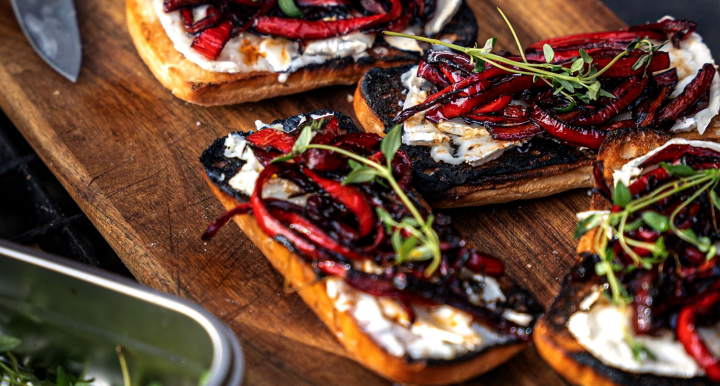
Conclusion
This guide has hopefully given you advice on cooking outside and guidance in your choice of an outdoor stove. Cooking outside is wonderful – not only does the food taste better, but the experience is fun and the fresh air beneficial! Take your family or friends out for a truly wonderful food and nature experience in the open air. Don't forget a garbage bag to throw trash in, matches and water to put out your fire.
Bon appetit!
